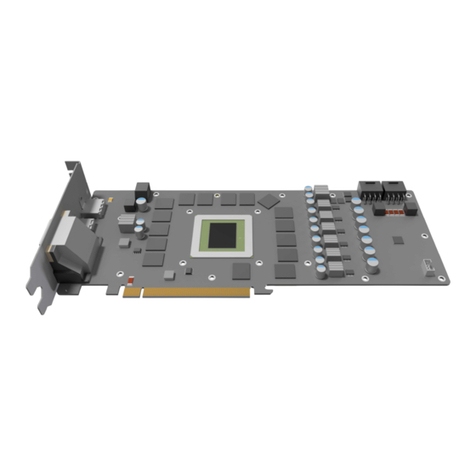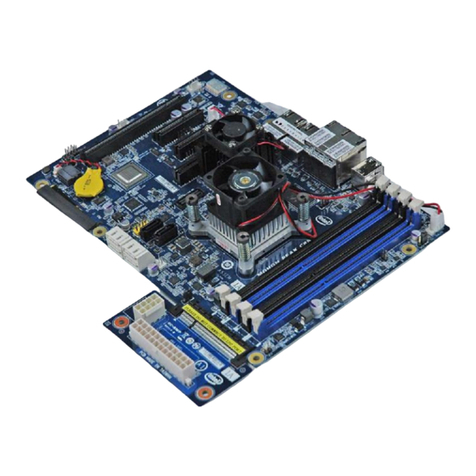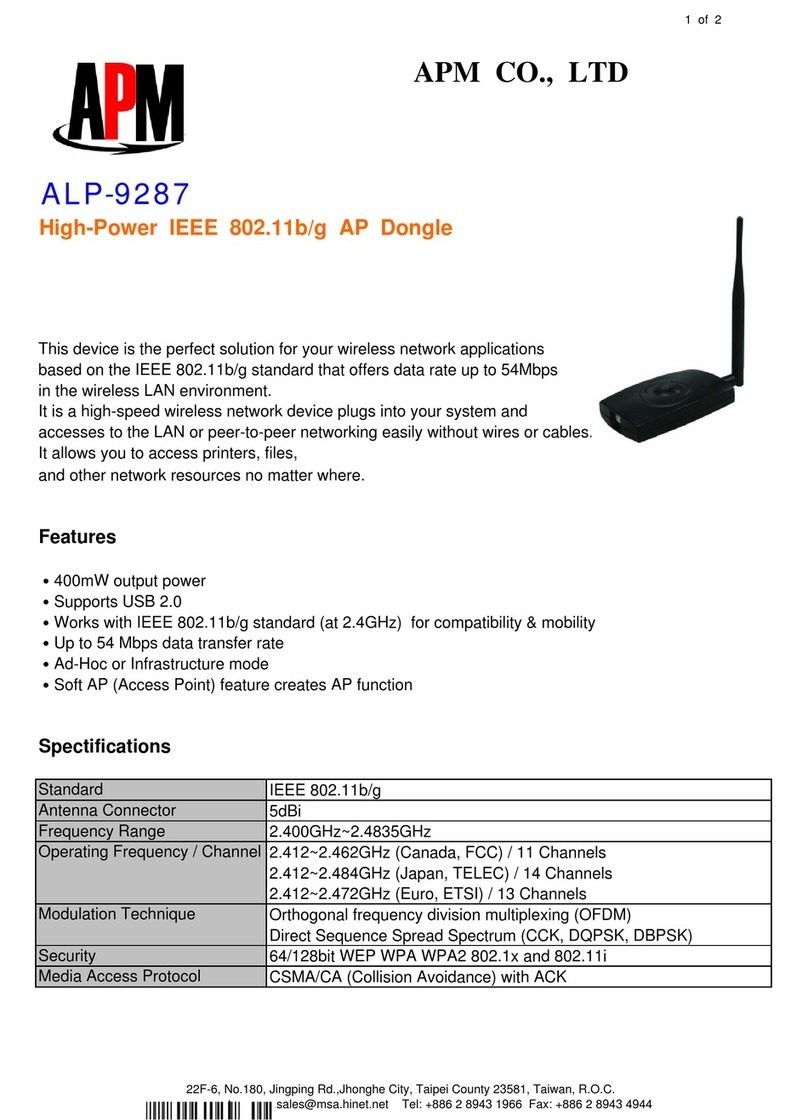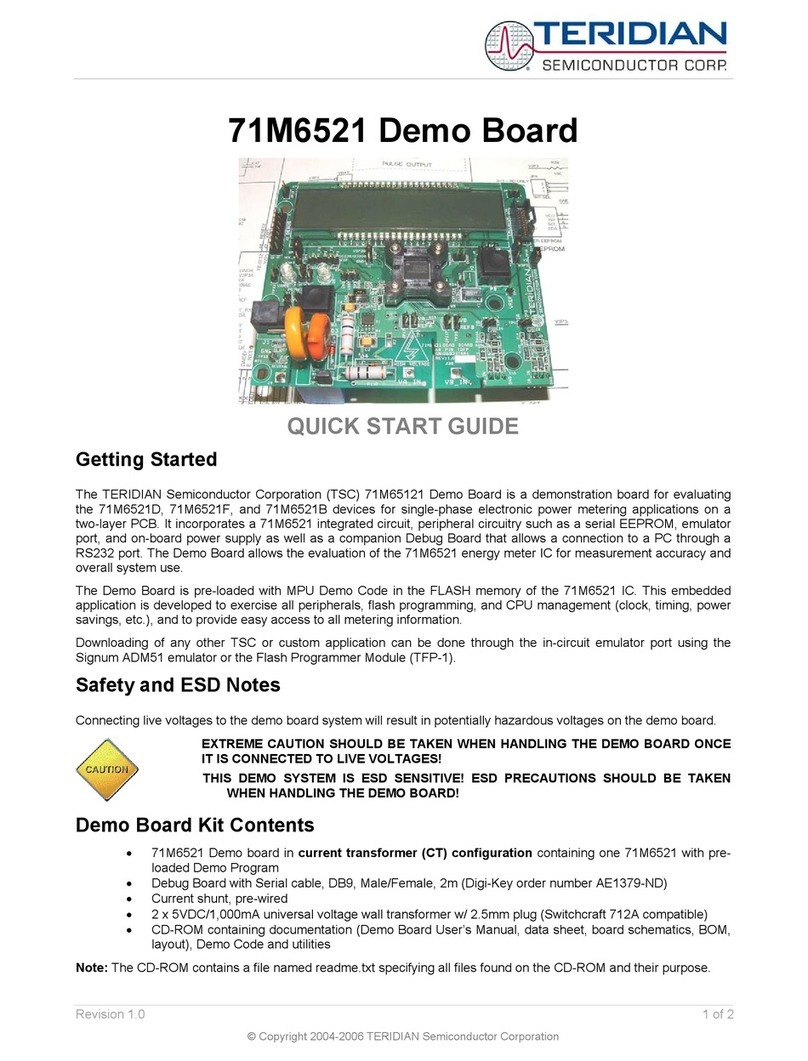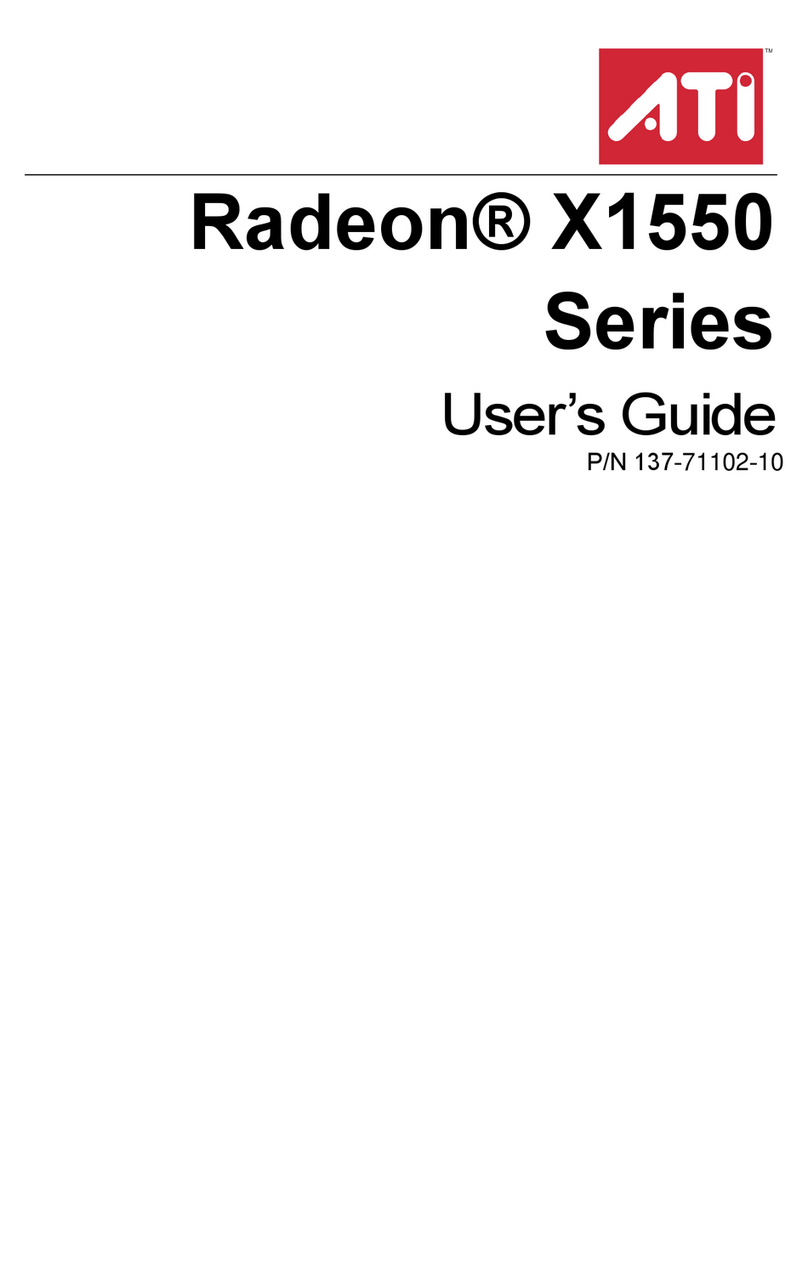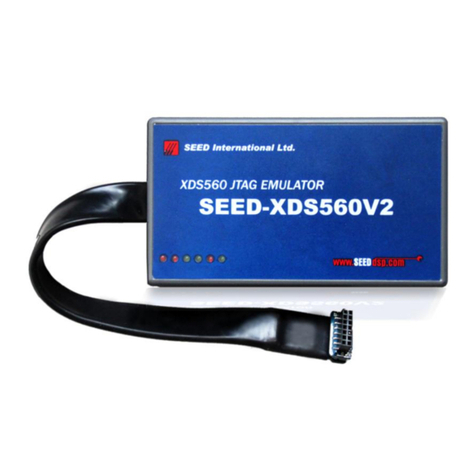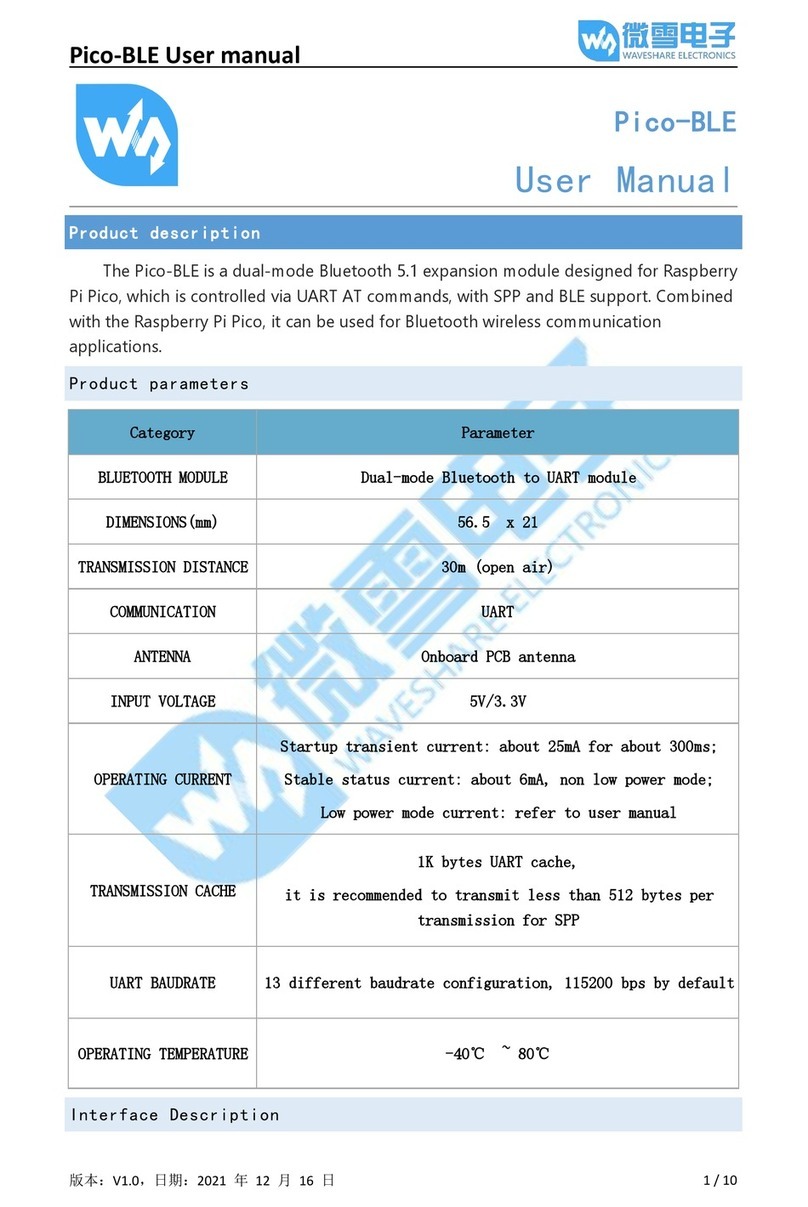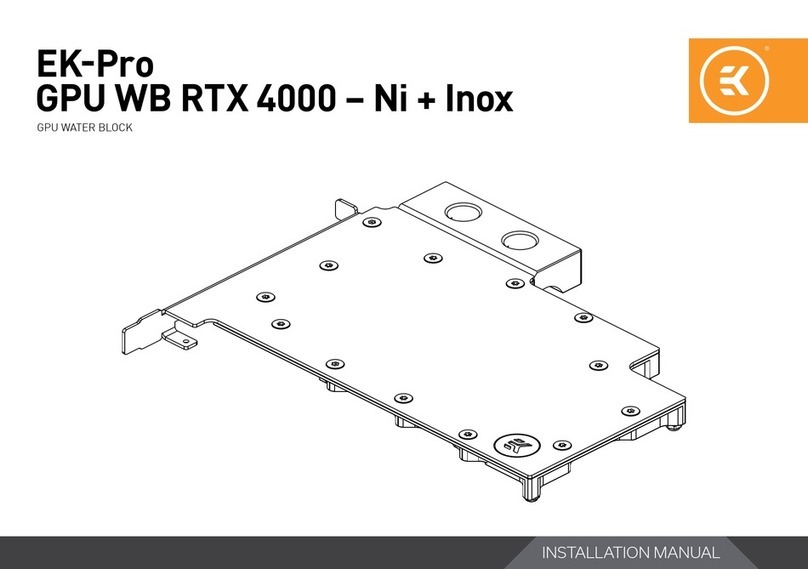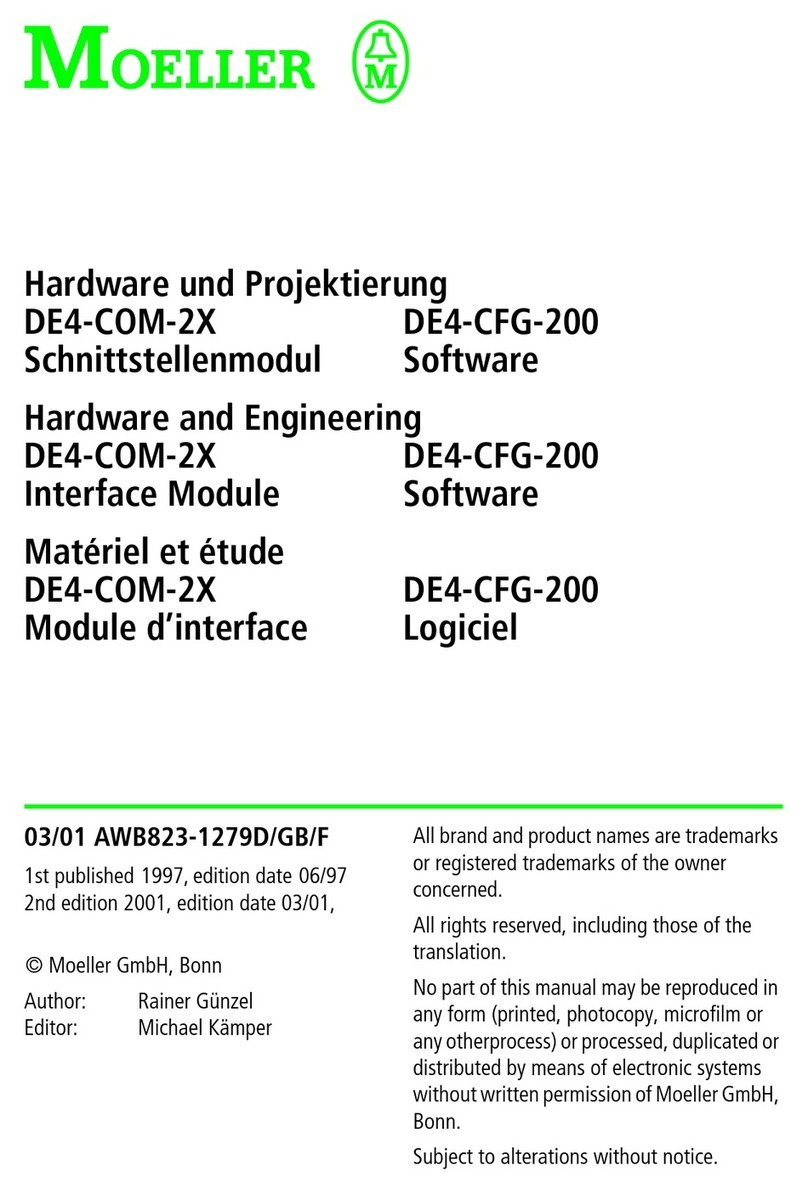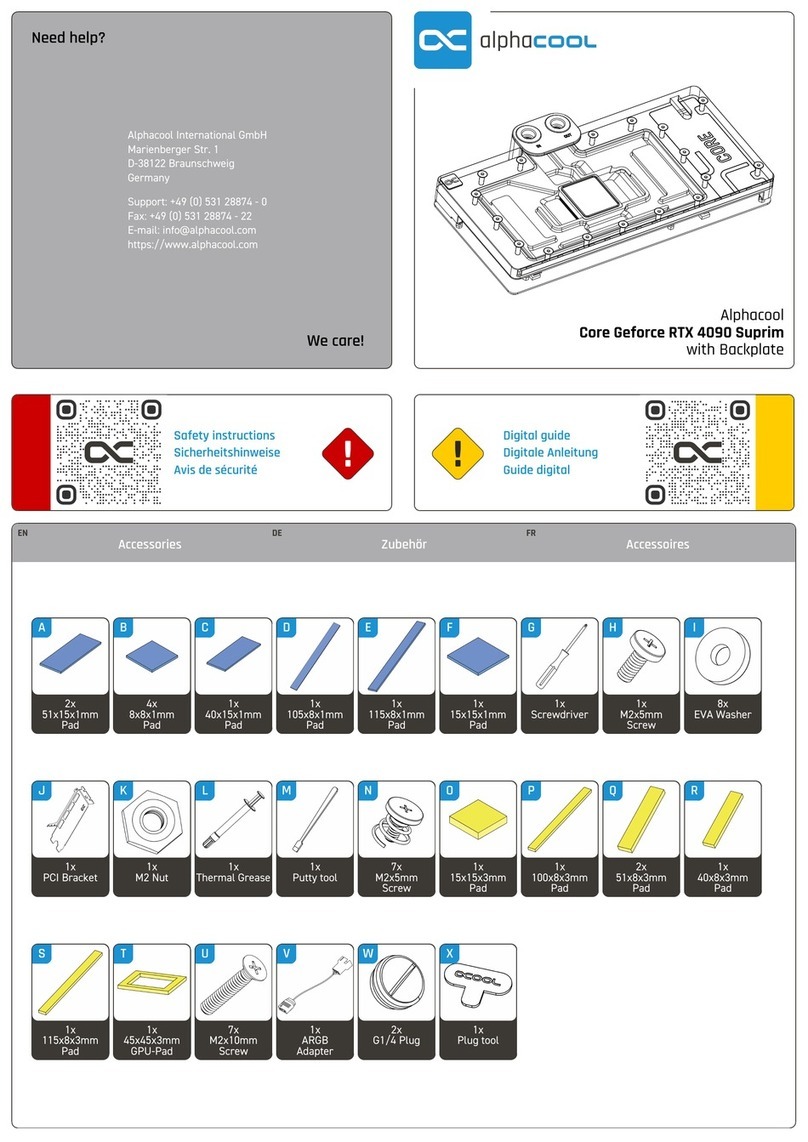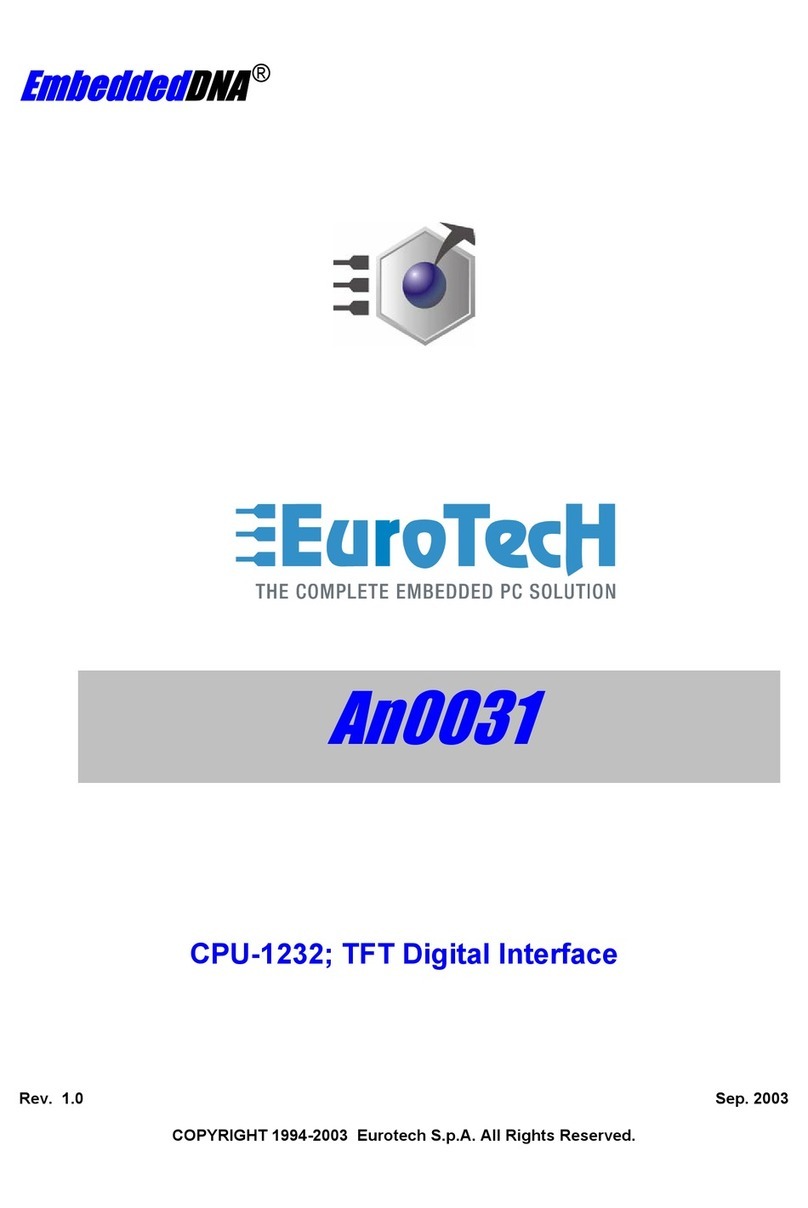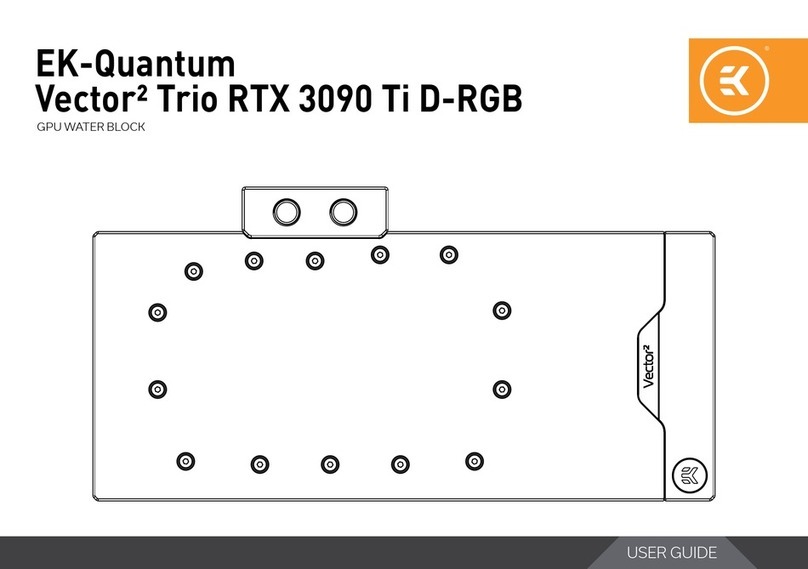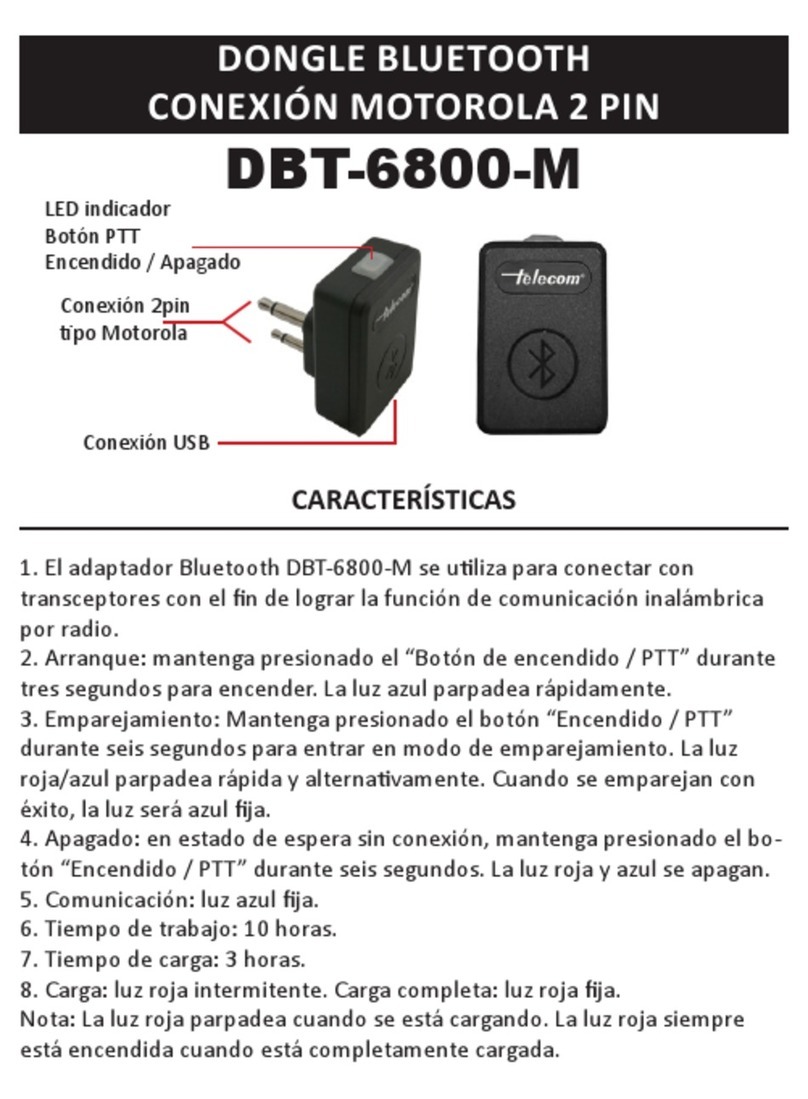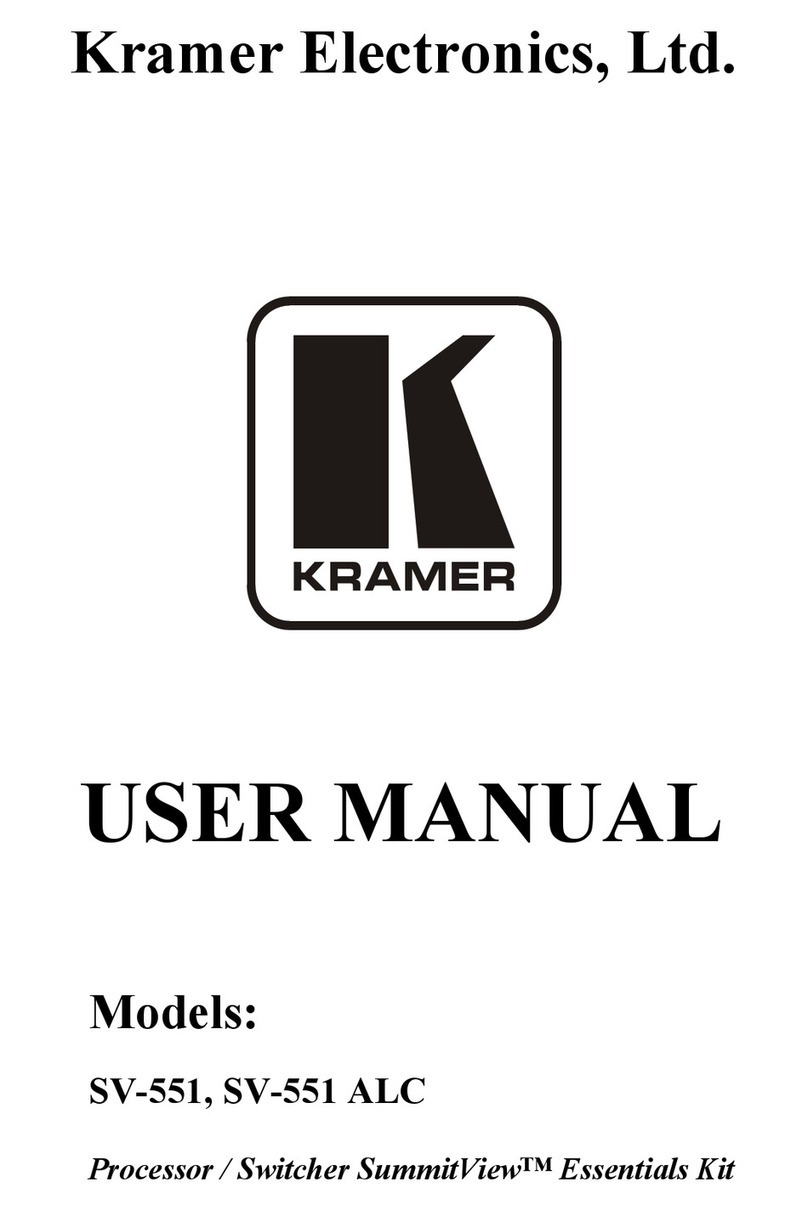Enterpoint Broaddown2 User manual

© Enterpoint Ltd. - Broaddown2 Manual – Issue 1.02 06/08/2005
Broaddown2 User Manual
Issue – 1.02

© Enterpoint Ltd. - Broaddown2 Manual – Issue 1.02 06/08/2005
Kit Contents
You should receive the following items with you Broaddown2 development kit:
1 - Broaddown2 Board
Figure 1 - Broaddown2 Board

© Enterpoint Ltd. - Broaddown2 Manual – Issue 1.02 06/08/2005
Fore word
PLEASE READ ALL OF THIS MANUAL BEFORE PLUGGING IN
OR POWERING UP YOUR BROADDOWN2. PLEASE TAKE
SPECIAL NOTE OF THE WARNINGS WITHIN THE MANUAL.
Trademark s
Coolrunner-II, Spartan-3, ISE, EDK, Webpack, Xilinx are the registered trademarks of Xilinx Inc,
San Jose, California, U S.
Moel-Bryn, Broaddown2 are trademarks of Enterpoint Ltd.

© Enterpoint Ltd. - Broaddown2 Manual – Issue 1.02 06/08/2005
Introduction
Welcome to your Broaddown2 the “Ultimate Spartan-3 Development Board”.
Broaddown2 is a member of Enterpoint’s Moel-Bryn product range and offers a
highly flexible approach to prototyping FPGA and System designs.
The aim of this manual is assist in using the main features of Broaddown2. There are
features such as regulator shutdowncontrol and advanced programming features that
are beyond the scope of this edition of the manual. Should you have a need to use
these features then please contact the support email support@enterpoint.co.uk for
detailed instructions to use these advanced features.
Broaddown2 comes in 3 principal variants based on the size of FPGA fitted. The
Spartan-3 fitted can either be XC3S400-4FG456C, XC3S1000-4FG456C, or
XC3S1500-4FG456C. Should you need the faster -5, industrial or automotive grade
FPGA’s fitted to a board please contact Enterpoint sales for a quote.
In addition to these principal variants Broaddown-2 has build options for LVDS
termination resistors and YFS connectors. Please contact sales for a quote if you
require these options.
Broaddown2 modules that are now available to purchase:
A/D Converter (DIL Header Module)
Low Cost Programming Cable (Standalone)
SODIMM I/O Expansion Module
PCI I/O Expansion Module
RS232 Module
RS485 Module
USB2 Module
LED 4 Segment Display Module
PS2 Module
Ethernet Phy Module
AD7202 Module
We can also offer custom DIL Header modules should you require a function not
covered by our current range of modules. Typical turn around for this service is 2-4
weeks if parts can be obtained in time.

© Enterpoint Ltd. - Broaddown2 Manual – Issue 1.02 06/08/2005
Finding Your Way Around
Figure 2 - Front Side of Broaddown2
Figure 3 - Back Side of Broaddown2

© Enterpoint Ltd. - Broaddown2 Manual – Issue 1.02 06/08/2005
Getting Started
Your Broaddown2 will be supplied pre-programmed with a test design. A default setting of jumpers
will also be fitted. The test design will allow the user to determine that most of the major elements
of the Broaddown2 are working. To use this test you must do the following:
(1) Ensure that the LHS DIL Power Selector is set at the 3.3V position (factory default).
(3) Connect the Broaddown2 to your power source (un-powered) by the disk drive power connector
or by plugging into a PCI slot within a Personal Computer (un-powered). Please note that plugging
into a Personal Computer should only be done by an experienced system administrator. As with the
addition of any new element to a computer there is a possibility that plugging your Broaddown2
into a computer PCI slot may cause data corruption or loss. You should ensure that adequate
backups of data or systems are made before attempting this step. If you do not have a valid PCI
supporting design loaded in the FPGA on the board it is likely to freeze the supporting computer.
(4) Switch on your power source.
Figure 4 - Broaddown2 with LED/USB Module and DIP Switch fitted.
The flash memory/s can be re-programmed at any time using the appropriate JTAG interface. You
will need a JTAG programming cable PROG1/2, or Xilinx Parallel IV, or Xilinx USB programming
cables (flying leads needed) together with Xilinx ISE tools to re-program the Platform Flash
devices.

© Enterpoint Ltd. - Broaddown2 Manual – Issue 1.02 06/08/2005
Broaddown2 Features
Power Inputs
Broaddown2 can take current from either the PCI edge connector or the Disk Drive Connector at
the top left of the card. The power supplies on the PCI edge connector can be isolated by jumpers
J24 and J30 should a power supply contention issue arise. It is recommended that for currents
greater than 2 amps on the 5V input and 0.5 amp on the 12V rail then the disk drive connector
should be used.
The principal input to Broaddown2 is the 5V input. The 12V input is only used to feed the Negative
Voltage Rail circuits and for the M oel-Bryn expansion position.
Reset-able poly-fuses are fitted to both the 5V and 12V inputs. Respective notional ratings of 7
amps and 3 amps are the limits of power input. The actual trip currents of these devices will vary
with cooling and ambient temperature and hence the operational cut-offs may be much lower that
these figures.
WARNING – THE POLY-FUSES CAN GET VERY HOT IN
NORMAL OPERATION. PLEASE DO NOT TOUCH OR PLACE
HIGHLY FLAMABLE MATERIALS NEAR THESE DEVICES
WHILST THE BROADDOWN2 IS IN OPERATION.

© Enterpoint Ltd. - Broaddown2 Manual – Issue 1.02 06/08/2005
Power Pickups
Figure 5 - Broaddown2 Power Pickup Points
WARNING – DO NOT CONNECT ANY VOLTAGE HIGHER
THAT 3.3V TO THE SPARTAN-3 I/O PINS. TAKE GREAT CARE
THAN CIRCUITS POWERED FROM VOLTAGES HIGHER THAN
3.3V DO NOT DRIVE SIGNALS CONNECTED TO SPARTAN-3 TO
A SIGNALLING VOLTAGE GREATER THAN 3.3V.
Broaddown2 has power pickup points. Each pickup normally consists of a 3 pin 2mm header
although some other types of pick-up are available on Broaddown2. The pinout of the 3 pin pickup
points is usually defined as:
Pin1 - Voltage O/P
Pin2 - Isolated
Pin3 - Gnd (0V)
In addition to these pickup points power can be picked up from LHS DIL Header, RHS DIL
Header, Bank Voltage Selector J26 and Vref Voltage Selector J15. Please see the relevant sections
for more details on these features.

© Enterpoint Ltd. - Broaddown2 Manual – Issue 1.02 06/08/2005
The voltages that are available on 3 pin pickup points are as in the following table.
Voltage Header Note
12V J34
5V J33
4.1V J39
3.3V J38
2.5V J37
1.8V J36
1.5V J10
1.2V J9
User1 Rail J7 Potentiometer socket, Pin2
not isolated
User2 Rail J6 Potentiometer socket, Pin2
not isolated. Rail may need
to be turned on by CPLD
output.

© Enterpoint Ltd. - Broaddown2 Manual – Issue 1.02 06/08/2005
Selecting FPGA Bank (Vcciox) + Main SODIMM Voltages
Broaddown2 divides the I/O pins of the fitted Spartan-3 into 7 banks. The FPGA does natively
support 8 banks however on Broaddown2 banks 6+7 share their Vccio. The key to voltage selection
and hence support I/O standards is header J26. From this header the 7 bank voltages and SODIMM
main voltages can individually be selected from 3V, 2.5V and 1.8V. Additionally 1 extra selection
is available to each output power rail. By soldering appropriate solder bridges SB170-185 1.2V or
1.5V can be made available as levels. It is also possible to set a custom level using a flying lead to
the header but the voltage supplied should be the range +1.2V to +3.45V. Please note that the
header is not pinned out the same way for each output power rail. The pinout chosen makes it
unlikely that input power rails can be shorted together using a single jumper. The header layout and
the nearby RHS DIL Power Selector are shown below.
3.0V
2.5V
1.8V
USER SOD 3.0V
2.5 V
1.8 V
USERBK6
3.0V
2.5V
1.8 V
USER BK0 3.0V
2.5 V
1.8V
USERBK5
3.0V
2.5V
1.8V
USER BK1 3.0V
2.5 V
1.8 V
USER
BK4
3.0V
2.5V
1.8 V
USER BK2 3.0V
2.5 V
1.8V
USERBK3
3.0V
2. 5V
1. 8V
RHS

© Enterpoint Ltd. - Broaddown2 Manual – Issue 1.02 06/08/2005
Selecting FPGA Vref Voltages
Broaddown2 primarily supports Vref voltages for banks 2,3 and 4. It is these banks that connect to
the DDR2 SODIMM module. It may be possible to apply Vref for other banks using flying wires
but please check with support before attempting this.
The selection of Vref is carried out on header J15. Each of banks 2,3,4 can be connected by jumper
to the reference voltage supplied by the push/pull (LP2996) regulator. This regulator generates a
reference voltage half that of its input reference voltage which is the SODIMM main supply rail.
Please note that jumper setting of J8 will affect the range with which the LP2996 will regulate. For
details of this please refer to the LP2996 datasheet.
As an alternative the USER1 power rail can be used as a reference but this will not track the
SODIMM main voltage rail. V_U SER1 can be set within the range of 1.22V to 3.3V approximately
by fitting a potentiometer or resistor in socket position J7 between pins 2 and 3.
A spare selector is included on J15 should you need to pickup the LP2996 reference voltage. J15
also allows the grounding of Vref inputs to the FPGA should you need to do this. The pinout of J15
is shown below.
J8 should also normally be set to the 2V5 setting for DDR2 operation. This will allow generation of
a reference voltage of 0.9V when the main SODIMM power rail is set to 1.8V.

© Enterpoint Ltd. - Broaddown2 Manual – Issue 1.02 06/08/2005
Programming Broaddown2
SP A RT A N - 3
FPGA
PO WER CO NT ROL
+PROGRAMMING
COOLRUNN ER -II
CPLDS
JTAG
CONNECTOR
CPLD
PLATFORM
FLASH
(FPGA
PROGRAMMIN G)
JTAG
CONNECTOR
FPG A
Figure 6 - JTAG Connector Positions
The programming of the FPGA, CPLDs and Platform Flash parts on Broaddown2 is achieved using
JTAG chains. Principally it is anticipated that a JTAG cable will be used in conjunction Xilinx ISE
software although other alternatives do exist including self re-programming.
There are 2 JTAG chains on Broaddown2. The first chain allows the programming of the three
Coolrunner-II CPLDs. Normally users will not need to reprogram these devices. However to use
special power sequencing and/or advanced programming features reprogramming of these devices
may be needed. If you are considering using these features you should study the Broaddown2
circuits and understand the full functionality before modifying the CPLD programming.
The second JTAG chain allows the programming of the Spartan-3 and Platform Flash devices as
well as the a Moel-Bryn expansion card if fitted.
Each JTAG connector has a layout is as follows:

© Enterpoint Ltd. - Broaddown2 Manual – Issue 1.02 06/08/2005
The CPLD chain looks like this:
Figure 7 - CPLD JTAG Chain
The FPGA chain looks like this:
Figure 8 - FPGA JTAG Chain
If a Moel-Bryn module supporting a JTAG programmable device is fitted then jumper J14 should
be removed.
Programming of the Spartan-3 FPGA can be achieved by direct JTAG programming or from the
Platform Flash memory/s. By default the Spartan-3 devices is programmed from the Platform Flash
memories at power up. However the default configuration mode can be altered by reprogramming
the Coolrunner-II CPLDs on Broaddown2. Direct JTAG programming is volatile and the FPGA
will lose its configuration every time the board power is cycled. From sustained use of FPGA
design programming the design into the Platform Flash memory is recommended. Generation of
suitable Platform Flash content files and control of the JTAG chain can be achieved using the
XILINX ISE tool IMPACT.

© Enterpoint Ltd. - Broaddown2 Manual – Issue 1.02 06/08/2005
Primary Voltage Regulators
Figure 9 - Primary Power Regulator Features
Broaddown2 has a power backbone based on four TPS75901 linear regulators. These regulators are
capable of delivering 7.5 amps. The structure of these four regulators is a semi-chain so that
effectively all the current taken out of the chain passes through the top regulator (4.1V) and any
intermediate chain regulators. Therefore the absolute maximum current that can be delivered into
Broaddown2 is limited to 7.5 amps.
The output voltages of this chain are 4.1V, 3.3V, 2.5V and 1.8V. Practically the current delivered
by the regulator chain will be limited by the RGE500 reset-able fuse that is fitted on 5V input to the
regulator chain. From practical experience and testing the following total current can be delivered in
the primary regulators under the following cooling conditions.
Cooling Approximate Board Input Current Limit
No Forced Cooling 3 Amps
Simple Fan Fitted To Mounts 5 Amps
Special Cooling 7.5 Amps
With the exception of the 4.1V regulator each Primary Regulator has a zero ohm resistors on input
supply and on regulator output. It is possible using these resistors to break the chain to allow
measurement of individual currents. These features can also be used where more complex power
sequencing needs to be modelled or if a switching regulator input needs to be substituted.

© Enterpoint Ltd. - Broaddown2 Manual – Issue 1.02 06/08/2005
Secondary Power Regulators
Figure 10 - Secondary Power Regulators
Broaddown2 has a number of secondary regulators. These regulators are derived from twin
regulator devices TPS70402. These regulators will deliver 1 or 2 amps depending on which section
of the TPS70402 is being used. The following voltage rails are derived using these regulators.
VO LT AGE DEVICE CURRENT RATING O/P SERIES RESISTOR
Vccaux (SPARTAN-3) U2 1AMP NO
Vccint (SPARTAN-3) U2 2 AM P YES
Vccaux2 (NOT USED) U3 1AMP NO
1.5V U3 2AMP YES
USER1 U41AMP YES
USER2 U42AMP YES
Current measurement can be achieved by replacing a zero resistor with a low ohm sense resistor
where the above table indicates a suitable resistor position.
A separate TPS70402 (U14) is also fitted to Broaddown2 for the supply of the Coolrunner-II
CPLDs. This device operates independently of the main and secondary regulator chains.
As these regulators are variable regulators rail voltages can be modified to suit particular voltage
applications if necessary. The minimum that the TPS70402 will regulate to is 1.22V.

© Enterpoint Ltd. - Broaddown2 Manual – Issue 1.02 06/08/2005
Negative Rail Generation + Selection
Broaddown2 has 2 inverting LT1054 charge pump regulators fitted. Each regulator will deliver
about 100 mA and the two outputs can be connected together to give a single 200 mA supply. The
regulators are operated in simple inverting mode and do not offer much in regulation in this mode.
If you need tight regulation, or low noise, you should fit a post regulator to improve these
parameters.
The LT1054 regulators will deliver the approximate inverse of their input voltages. Selection
headers J31 and J32 allow the selection of 12V, 5V and 3V as input voltages by jumper.
Alternatively different voltages can be feed into the LT1054 by flying wire to J31/ J32 to give other
voltages. The LT1054 fitted has a maximum input of 15V and a technical minimum of 3.5V.
Enterpoint has found that input voltages lower than 3.5V do work in practise but operation of the
LT1054 is not guaranteed at these levels. The pinout of J31 and J32 is as follows.
Figure 11 - Negative Voltage Regulators InputSelection (J31 / J32)
J28 header allows the selection of voltages that are to be feed to the M oel-Bryn expansion module.
This header also acts as a pickup point for these supplies and users can connect their flying lead
connections to this header.

© Enterpoint Ltd. - Broaddown2 Manual – Issue 1.02 06/08/2005
SODIMM Socket
Figure 12 - SODIMM Features
WARNING – DO NOT INSERT A DDR1 SODIMM INTO THE
DDR2 SODIMM SOCKET. IT WILL SHORT OUT THE POWER
SUPPLIES.
CURRENTLY WE ARE NOT SUPPORTING MEMORY BASED
SODIMMS IN THIS SOCKET. THE DETAILS IN THIS SECTION
ARE FOR YOUR INFORMATION ONLY.
Broaddown2 has a DDR2 SODIMM socket allowing the fitting of a I/O expansion module
Figure 13 - SODIMM I/O Module
The SODIMM I/O M odule can also be used to support loopback testing of the SODIMM Socket
when used in conjunction with a suitable test build loaded into the Spartan-3 FPGA.
The SODIMM Socket is keyed and will only support DDR2 style SODIMM modules. DDR2
SODIMM module pinout is incompatible with DDR1 SODIMM pinout. Do not remove the

© Enterpoint Ltd. - Broaddown2 Manual – Issue 1.02 06/08/2005
mechanical key to allow DDR1 modules to fit. If non-memory modules are fitted then the Socket
can supply alternative voltages of 3.3V, 2.5V or 1.8V by jumper selection. Other voltages available
by flying wire. Please note that the relevant Spartan-3 Bank voltages should be set appropriately for
whichever voltage is used. In addition do exceed the Spartan-3 maximum I/O voltages. A 0 to 3.3V
signalling (4.05V absolute max) is the maximum normal range of signalling that Spartan-3 can
tolerate.
When used for a DDR2 (currently not supported) memory function the following signal features are
available:
(1) 32 bit data (upper 32 bit not available)
(2) A0 TO A13 address
(3) BA0 to BA2 bank address
(4) DM 0 to DM 3
(5) CK0, CK1
(6) CKE0, CKE1
(7) RAS
(8) CAS
(9) CS0, CS1
Because the data bus has been narrowed from 64 bit to 32 bit any standard DDR2 SODIMM fitted
with effectively only have half its stated capacity. Peak data rate of 200 MHz (100 MHz clock) are
to be expected.
The signals of the SODIMM Socket have been connected to banks 2, 3, 4 of the Spartan-3 FPGA.
To use a DDR2 module you will need to set the relevant Vcciox (bank) and Vref (reference)
voltages to 1.8V and SODIMM reference voltage respectively. Track lengths between the
SODIMM Socket and the Spartan-3 have been matched as closely as is practical to minimise signal
skew.
SODIMM configuration prom reading is supported indirectly. It is directly wired to a Coolrunner-II
CPLD U11 and can be accessed by the Spartan-3 FPGA via the CPLD Expansion Bus. This feature
is not automatically enabled when you Broaddown2 is delivered and you should contact support
support@enterpoint.co.uk if this feature is needed.
The LP2996 regulator will provide a +/- 1.5 amp termination voltage at half the SODIMM main
voltage input. J8 allows the power input voltage of the LP2996 to be set to either 2.5V or 3.3V. For
DDR2 voltage levels operation the jumper should be fitted between pins 1 and 2 to select 2.5V
inp ut s upp ly .
To select the main SODIMM voltage rail please refer to the section on Bank Voltage Selection.

© Enterpoint Ltd. - Broaddown2 Manual – Issue 1.02 06/08/2005
PCI Edge Connector
Figure 14 - Broaddown2 PCI Interface Features
WARNING – BROADDOWN2 HAS BEEN DOUBLE KEYED TO
ALLOW USE IN BOTH 3.3V AND 5V PCI SOCKETS. IT IS
POSSIBLE TO PLUG BROADDOWN2 INTO THE PCI SOCKET
BACKWARDS OR DISPLACED. IF A BROADDOWN2 IS
INSERTED INCORRECTLY AND POWERED THE
BROADDOWN2, AND HOST SYSTEM, WILL BE DAMAGED.
PC POWER SUPPLIES OFFER VERYLITTLE PROTECTION
AND WE HAVE SEEN POWER SUPPLY LEADS MELT AND
CATCH FIRE UNDER SHORT CIRCUIT CIRCUMSTANCES.
TAKE EXTRA CARE TO ENSURE BROADDOWN2 IS INSERTED
CORRECTLY.
Broaddown2 has been design to work in both 3.3V and 5V PCI systems. For this interface to work
as a PCI interface you will need to buy, or design, a suitable FPGA PCI logic circuit or IP core.
Broaddown2 will be supplied with test builds containing a PCI IP core and other cores for your
evaluation and use. We are hoping to release our own low cost Target Only PCI Core shortly.
Broaddown2 supports a 32 bit, 33 MHz, implementation of PCI.
The pinout of the Spartan-3 FPGA has been chosen such that the PCI interface follows the Xilinx
PCI IP core (XC3S400-4FG456C pinout). FPGA pin numbers are available on the customer
schematics. Our current test builds use the Xilinx PCI core.

© Enterpoint Ltd. - Broaddown2 Manual – Issue 1.02 06/08/2005
The Spartan-3 FPGA has an absolute input voltage maximum of 4.05V (3.3V signalling). To allow
use in 5V PCI systems we have added Bus Switch parts IDTQS32X681 between the PCI Edge
Connector and the Spartan-3 FPGA. These parts limit the voltage seen by the Spartan-3 FPGA.
Technically addition of these parts make the interface non-compliant with the PCI specification.
However in practise this implementation of the interface has no operation issues.
If you don’t want to use the PCI Edge Connector for PCI and run Broaddown2 standalone you can
use the Disk Drive Power Connector to power the board. Using the optional PCI I/O Expansion
Module you can use PCI interface as general I/O.
Figure 15 - PCI I/O Expansion Module
If you need 5V input tolerant I/O and don’t need PCI then, then using this module is an easy way of
achieving this. The Bus Switches on Broaddown2, fitted for 5V PCI tolerance, work as well for
general 5V input signals. The timing penalty, i.e. through propagation, of the Bus Switches is
approximately 250 pico-seconds.
Table of contents
